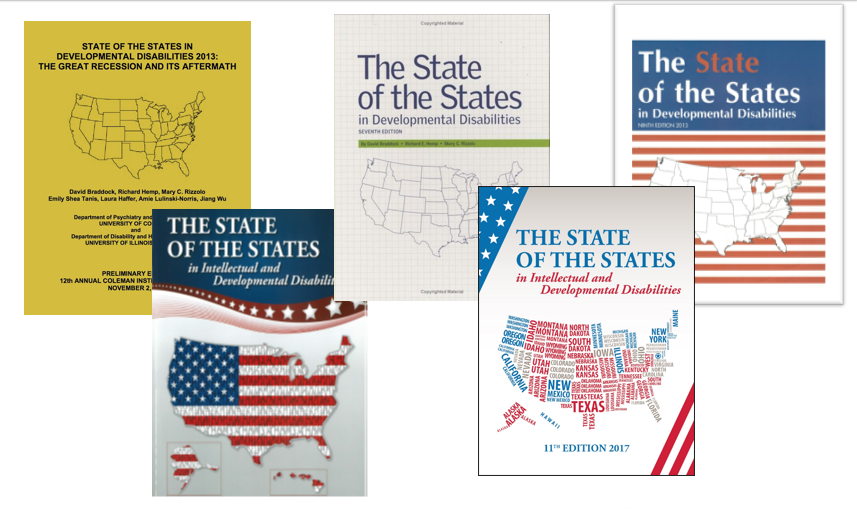About
Page Contents
Welcome
Welcome to the website for The State of the States in Intellectual and Developmental Disabilities Project, housed at the Kansas University Center on Developmental Disabilities, and funded by the U.S. Administration for Community Living.
Project of National Significance
The State of the States in Intellectual and Developmental Disabilities Project is one of three Longitudinal Data Collection Projects authorized under the Developmental Disabilities Assistance and Bill of Rights Act of 2000 (DD Act) as a Project of National Significance.
Summary
The State of the States in Intellectual and Developmental Disabilities project was initiated in 1982 to investigate the determinants of public spending for intellectual and developmental disabilities (ID/DD) services in the United States. In other words, we track money. The Project has developed a 40-year record of revenue, spending, and programmatic trends in the 50 states, the District of Columbia, and the United States as a whole. Analysis of the data shows the impact over time of federal, state, and local government fiscal policy. The data reveals important service delivery trends in the states for community living, public and private residential institutions, family supports, supported employment, supported living, technology solutions, and Medicaid Waivers. Demographic data includes general population, personal income, and total state budget.
Method
The State of the States in Intellectual and Developmental Disabilities Project focuses on financial outcomes of state and federal investments in ID/DD services and supports. Our primary data sources are the states themselves. We collect data in partnership with state agencies on developmental disability services and/or the state Medicaid authorized agency. We use secondary data sets and administrative data for our analyses and validation.
The Project collects data every other year. The project reports data in concert with other national data collection projects with a two-year delay.
Why can you not get more up-to-date data?
The Project presents data on “actual expenditures” in the states, so data can only be reported after the fiscal year and with adequate time to report the information.
After our data is collected, we analyze the data and then return the results to our state agency partners to verify and approve of the analyses. Only after final approval from agency Directors do we publish our results.
Throughout the history of the project, many staff have played different roles for the project and integrated their own nuances. A few examples of this that have stuck with the project are the collection of budgets from the states, the use of Excel as the main database system, and the methodological shift to contacting states for data. An additional shift was a hiatus from disseminating the State of the States Monograph. The monograph was a book covering all data collected by the States of the States project that was then sent out to constituents in the mail. Due to the advancement of the internet and the rising cost of paper products, the project transitioned to posting the State Profiles to our website.
